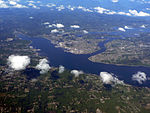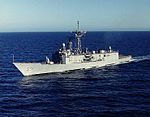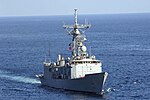Port Orchard, Washington
All pages needing cleanupCities in Kitsap County, WashingtonCities in Washington (state)County seats in Washington (state)Populated places established in 1886 ... and 3 more
Port Orchard, WashingtonUse mdy dates from July 2023Wikipedia pages needing cleanup from May 2018

Port Orchard is a city in and the county seat of Kitsap County, Washington, United States. It is located 13 miles (21 km) due west of West Seattle and is connected to Seattle and Vashon Island via the Washington State Ferries run to Southworth. It is named after Port Orchard, the strait that separates Bainbridge Island from the Kitsap Peninsula. As of the 2010 census the population was 11,144, and in 2019 the population was an estimated 14,597.
Excerpt from the Wikipedia article Port Orchard, Washington (License: CC BY-SA 3.0, Authors, Images).Port Orchard, Washington
Spokane Avenue,
Geographical coordinates (GPS) Address Nearby Places Show on map
Geographical coordinates (GPS)
| Latitude | Longitude |
|---|---|
| N 47.531666666667 ° | E -122.63833333333 ° |
Address
Spokane Avenue 1152
98366
Washington, United States
Open on Google Maps









